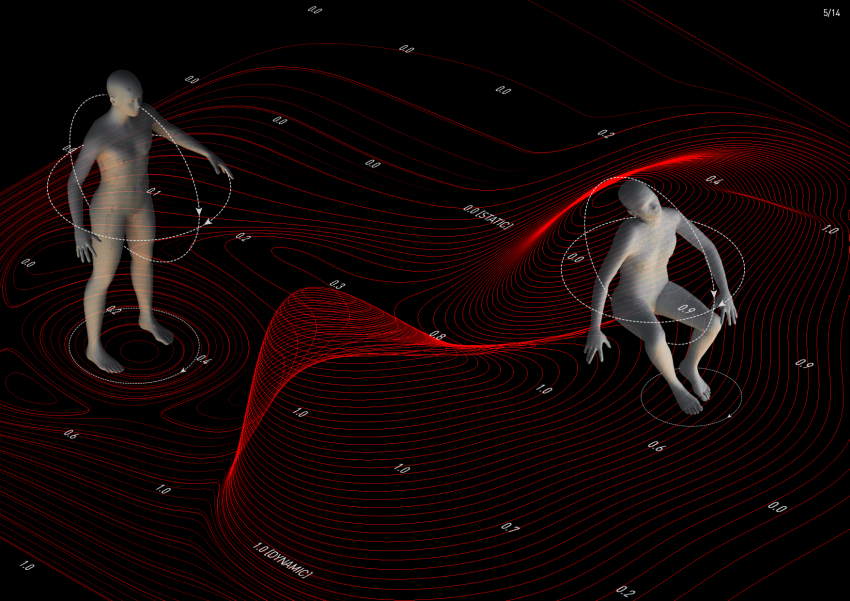Msc2workshop:workshop01
Cyber-physical Spaces: Computational and physico-spatial explorations pertinent to the design of the GSM 3 multi-modal pop-up podium/stage
Tutors Team: Henriette Bier and Alex Liu Cheng
INTRODUCTION
This workshop introduces students to aspects of physical computing that are relevant for the design of a reconfigurable podium/stage. The components of the stage reconfigure according to activities fitting requirements of the symposium (lecture, discussion, lounge, etc.) and form a robust whole, which can bear their own loads and interact with the speakers / public in order to create personalised conditions.
Spatial reconfiguration addresses material and geometrical properties that facilitate change of use focusing on 3 days symposium activities such as on/off site 20-24 presentations of individual speakers (20 min. each), 4-6 moderated discussions with 2+1 speakers and moderator (20 min.), 3 coffee breaks and 1 reception for 20-30 people (120 min.). Some of the speakers are expected to be only virtually present but they would be still able to personalise the stage. With respect to implementation, WSN/BAN-enabled high-tech intelligence works in conjunction with architectural components in order to coordinate physical / geometrical rearrangements and/or spatial reconfigurations according to a set of conditions aimed at addressing users’ needs.
OBJECTIVES
The general objective is to develop a unified yet decentralized solution built on heterogeneous technologies and protocols that is heterotopically distributed yet physico-spatially and computationally entangled. Participating students will address contemporary issues pertaining to the interoperability of such systems as well as the complementary character of their distributed services. That is to say, the unified solution’s subsystems must be mutually compatible and complementary with respect to both ICTs as well as physico-spatial considerations.
Additionally, there are two specific objectives: (1) to stimulate students to consider the justification between sensed input and actuated output, one that extends beyond linear and/or merely reflexive correlations; and (2) to challenge students to propose dynamic architectural / design solutions that intuitively engage and are likewise engaged by the users, thereby instantiating a hyper-fluid dynamic between human and artificial agencies.
APPROACH AND DESIDERATA
3-4 groups of students will design 3-4 building components that are linked/connected with each other building a floor-seating-lectern-bar-wall-ceiling continuum. The following steps will be considered:
(1) Identify activities and criteria relevant for spatial reconfiguration;
(2) Identify cyber-physical systems that are able to address such spatial reconfiguration;
(3) Explore aspects of physical computing relevant for this exercise by employing an Arduino UNO MCU + Medical shield w/ supporting components, a BeagleBone Black development platform, 3 LightBlue Beans, and a Raspberry Pi Model B+ MCU.
(4) Sketchily model and simulate/prototype proposed system.
The resulting unified solution must physico-spatially and computationally evince immediate as well as delayed agency, explicit as well as implicit action, reaction, and interaction. Each subsystem must be as operational on its own, as in tandem, or as in concert with other subsystems.
DELIVERABLES
Deliverables will inform the next steps of the MSc 2 and will be uploaded on the GSM-wiki as follows:
01/03
Overview activities (sitting, standing, etc.) and criteria (slow-fast reconfiguration, soft-hard materials, etc.) relevant for required spatial reconfiguration;
Diagrammatic framework/model linking activities to spatial reconfiguration;
03/03
Review
Overview of cyber-physical systems able to address required spatial reconfiguration;
Hands-on studies exploring aspects of physical computing;
04/03
Model and simulation/prototype of proposed system.
07/03
Presentation on GSM-wiki (http://gsm.hyperbody.nl/) showing showing concept, parametric models, and behavioural simulations; virtual 3D-4D models showing the design within the site; sketchy structure and materialisation design; physical prototyping; photographs documenting production, assembly process, and final result.
